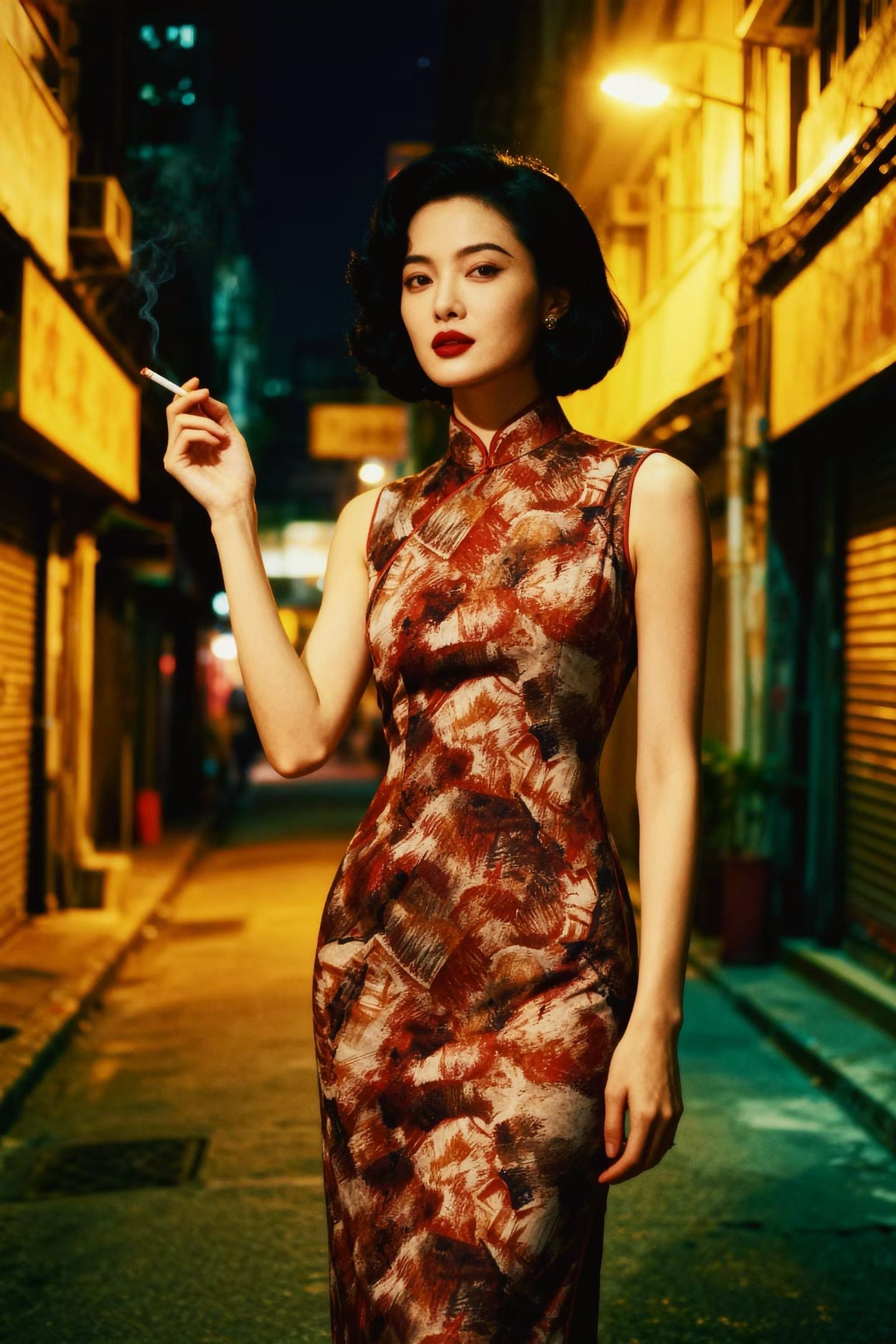深圳溯源
50年代 - 「抽象枫意」:上世纪五十年代古董羊毛抽象枫叶纹港式旗袍 / 1950s - "Abstract Autumn Intent": A 1950s Vintage Hong Kong Qipao in Abstract Maple Motif and Fine Wool
50年代 - 「抽象枫意」:上世纪五十年代古董羊毛抽象枫叶纹港式旗袍 / 1950s - "Abstract Autumn Intent": A 1950s Vintage Hong Kong Qipao in Abstract Maple Motif and Fine Wool
无法加载取货服务可用情况
分享一件上世纪五十年代抽象枫意古董羊毛港式旗袍。
旗袍通体摒弃重复性图案,
彼时国内设计师开始将西方现代艺术的“非具象美学”
羊毛因质地厚实、悬垂感强,多用于西式外套或男装。
细节处,旗袍的领口、襟边、下摆均以枣红真丝滚边,既呼应了“
"Abstract Autumn Intent": Maple Shadows, Modernist Abstraction, and the Poetic Spirit of a Rare Wool Qipao
We present a rare, vintage Hong Kong Qipao from the 1950s, defined by its abstract maple leaf aesthetic and exquisite wool composition.
The garment entirely eschews repetitive patterns, utilizing a "Grand Freehand" (Daxieyi) style to transform the maple leaf into a fluid dance of colour blocks and lines.
Four hues—ochre red, sunset orange-pink, dark teal (or ink-black), and off-white—interlace, capturing the momentary swirl of leaves as the autumn wind sweeps through the forest. The layering resembles the nuanced gradients of ink bleeding on rice paper: the ochre red forms the sinews of the maple leaf, the dark teal defines the extension of the veins, and the off-white suggests frost condensing on the tips of the leaves. The pattern's distribution defies symmetry, yet finds its own rhythm in the asymmetry: a concentrated area of rich colour on the left shoulder evokes the most brilliant maple tree of autumn, while the faint, blurred colours at the waist suggest flowing water stroking the fallen crimson. With every step, the colour blocks shimmer like maple shadows, bringing the poetic vision of "looking upon a mountain range ablaze in red, a forest deeply stained" to life.
During this period, local designers began integrating the "non-representational aesthetic" of Western modern art into traditional Eastern garments, much like the Tang Dynasty poet-painter Wang Wei pioneered the "Broken Ink Method" to revolutionize landscape painting—focusing on intent and spirit rather than literal form. The maple leaf itself is a traditional Chinese symbol of "Autumnal reflection" (Qiusi). From Qu Yuan's "The autumn wind is soft, the waves on Dongting lake make the leaves fall," to Du Mu's "Frosty leaves are redder than the flowers of the second month," this Qipao uses abstract language to recontextualize classical melancholy, transforming "desolation" into "a fervent yet contained vitality." It is a modern transition of traditional symbolism achieved within a single garment.
Wool, traditionally used for Western coats or menswear due to its thickness and strong drape, is rarely seen in Qipaos. Yet, this piece utilizes the wool's natural texture to reinforce the "brushstroke feel" of the abstract pattern—the micro-velvet surface of the wool acts like rice paper absorbing ink, giving the ochre and cinnabar-like colours a greater sense of penetration. Furthermore, 1950s wool Qipaos are incredibly rare; few were made, and due to wool's vulnerability to moths and preservation challenges, a piece in such pristine condition after over seventy years is truly a phenomenal rarity.
In the details, the collar, front opening, and hemline are edged with jujube red real silk piping. This feature both echoes the maple theme and contrasts the wool's stiffness with the silk's smoothness, serving as a clever preservation of the traditional "Xiang Gun" (piping and inlay) technique within a modern design.
分享












